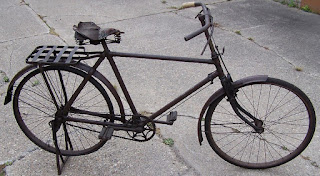Bicycling Through the Ages: A Look at How Bikes Have Evolved Over Time
Bicycling has been a popular form of transportation, recreation, and exercise for over a century. The modern bicycle as we know it today has undergone numerous changes and innovations since its invention in the early 19th century. In this blog post, we will take a look at how bicycles have evolved over time, from the early days of the penny-farthing to the modern-day e-bike, and how seniors have played a role in the evolution of cycling.
Early Days of Bicycling: The Penny-Farthing
The first bicycles, also known as velocipedes, were invented in the early 19th century. These bicycles had a simple design, with two wheels connected by a wooden frame and pedals attached to the front wheel. However, it was the invention of the penny-farthing in the 1870s that revolutionized bicycling.
The penny-farthing was a high-wheeled bicycle with a large front wheel and a small rear wheel. It was named after the British penny and farthing coins, which were of different sizes. The penny-farthing was popular among young men in the late 19th century, but it was also dangerous. Riders were at risk of falling off the bicycle, especially if they hit a bump or a rock in the road. The penny-farthing was eventually replaced by the safety bicycle, which had two wheels of the same size and a chain-driven rear wheel.
The Rise of the Safety Bicycle
The safety bicycle, also known as the diamond frame bicycle, was invented in the late 19th century. It had a low frame and two wheels of the same size, making it much safer and easier to ride than the penny-farthing. The safety bicycle became popular among both men and women and led to the growth of cycling as a popular pastime.
In the early 20th century, bicycle manufacturers began to experiment with new materials and designs to improve the safety and comfort of bicycles. They introduced pneumatic tires, which provided a smoother ride, and introduced new frame designs that were more aerodynamic and lightweight.
Bicycling in the 20th Century
The 20th century was a time of significant innovation in the bicycling industry. In the 1920s and 1930s, bicycles became a popular form of transportation in many countries, especially in Europe. Bicycles were used for commuting, shopping, and even long-distance travel.
During World War II, bicycles became an essential mode of transportation in many countries. Gasoline was scarce, and bicycles were a reliable and affordable way to get around. After the war, bicycle manufacturing boomed, and bicycles became more affordable and accessible to the masses.
In the 1960s and 1970s, bicycling experienced a resurgence in popularity, especially in the United States. The environmental movement and the rise of the fitness industry contributed to the growth of bicycling as a form of transportation and exercise.
In the 1980s and 1990s, mountain biking and BMX biking became popular among young people. These new forms of cycling were more extreme and adventurous than traditional road biking and attracted a new generation of cyclists.
The Modern-Day E-Bike
Today, bicycles continue to evolve and adapt to the needs and desires of cyclists. One of the most significant innovations in recent years is the e-bike, or electric bicycle. E-bikes are equipped with a battery-powered motor that provides assistance to the rider, making it easier to pedal and ride longer distances.
E-bikes have become increasingly popular among seniors who want to continue cycling but may have difficulty with hills or long distances. E-bikes also make it easier for seniors to keep up.
.png)


.png)



